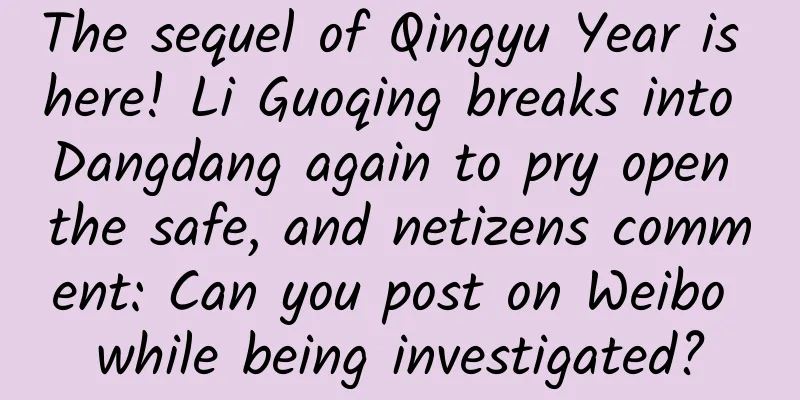Expert Feature: To the 2G Era That Will Eventually Pass Away

|
Recently, the incident in which a local operator "shut down 2G base stations" and required users to upgrade their packages caused heated discussions on social platforms. In May 2020, the Ministry of Industry and Information Technology issued the "Notice on Deeply Promoting the Comprehensive Development of Mobile Internet of Things", which proposed to promote the migration and network transfer of 2G/3G IoT services, establish a comprehensive mobile IoT ecosystem with the coordinated development of NB-IoT, 4G and 5G, and use NB-IoT to meet most low-speed scenario needs, LTE-Cat1 to meet medium-speed IoT needs and voice needs, and 5G technology to meet higher-speed, low-latency networking needs. After the official launch of 5G commercial use, my country's information and communication industry has entered a special period of "coexistence" of four generations of 2G/3G/4G/5G technologies. Under the pressure of the huge "scissors gap" between input and output, the Ministry of Industry and Information Technology began to encourage migration and network transfer, and use limited spectrum resources for the development of 4G and 5G networks. It is true that 2G has made outstanding contributions to the development of my country's mobile communication network. It has wide network coverage and high voice quality, and it is still shining. However, for a long time, the "double low and double high" disadvantages of 2G network, such as low user value, high maintenance cost, low spectrum utilization and high power consumption, have brought a heavy burden to the development of the industry, and there have been constant calls for 2G network withdrawal in the industry. In fact, as early as 2018, China Unicom had deployed the withdrawal of 2G networks in many provinces, firing the "first shot" of 2G network withdrawal. China Telecom followed closely and issued a related announcement, opening the curtain of 2G network withdrawal. In 2020, China Mobile also issued a notice to clarify that NB-IoT and 4G technologies will carry 2G Internet of Things services and stop adding new 2G Internet of Things users by the end of 2020. At this point, the three major operators have assembled, and the withdrawal of the world's largest 2G network has become a foregone conclusion. The withdrawal of 2G networks is not only a policy issue, but also a strategic issue. According to the development law of mobile communication technology, the withdrawal of 2G networks is an inevitable trend. In recent years, the number of users and applications based on 2G networks has been decreasing, while the use of data traffic has been increasing day by day. Recultivating GSM low-frequency spectrum resources for 4G and 5G networks has become a common demand for industry development. This not only represents the development direction of the industry, but also an inevitable requirement of the national 5G strategy. At present, 2G mainly covers groups and fields such as the elderly, remote areas and enterprise IoT. How to better meet the needs of these user groups and better shoulder the social responsibility of universal service after the withdrawal of 2G network is a question worth pondering for operators and the industry. The road ahead is long and arduous, but we will reach our destination if we keep going. However, we need to "plan carefully before we act". Operators should comprehensively carry out the overall planning of 2G network withdrawal. They should not only find out the 2G "family background" and clarify the roadmap of 2G network withdrawal, but also formulate clear key tasks and progress plans, and calculate resource input and output. The operator group company should comprehensively consider the relevant work arrangements of 2G network withdrawal according to the actual situation of each province, adhere to the user demand-oriented principle, adhere to the principle of "combining thorough transformation with guided migration", take user satisfaction and no reduction in experience as the overall goal, and implement the relevant work of network withdrawal in steps and stages. This is a slow and careful process. The withdrawal of 2G network is not only the business of operators, but also the business of the whole society. The withdrawal of 2G network involves many aspects such as user demand, network coverage, terminal transformation, universal service, and aging-friendly transformation. It requires the efforts of operators and the joint efforts of the whole society. First, at the government level, there is an urgent need to strengthen publicity and guidance to make the whole society understand and accept the fact that 2G network withdrawal is an inevitable trend, which is in line with the national policies and development strategies. At the same time, relevant subsidies and incentive policies should be introduced in the fields of network coverage, terminal transformation, universal services, and aging-friendly services to reduce the "physical and mental pressure" of operators in withdrawing 2G networks; Second, at the operator level, we must resolutely not be a "hands-off shopkeeper" and carry out the 2G network withdrawal work in stages, according to priorities and rhythmically, strengthen the comprehensive coverage of 4G and 5G networks, meet the actual needs of user groups such as remote rural areas, the elderly, and enterprise IoT, and promote the universal service capabilities and levels to a higher level; Third, at the terminal manufacturer level, we will strengthen the adaptation of terminals to the elderly, actively publicize and guide the widespread use of smart terminals among the elderly, strengthen cooperation with operators, governments, universities, etc., and fully rely on organizations such as senior citizen universities and community centers to carry out smart terminal training and guidance for the elderly, and enhance the experience and perception of users who have withdrawn from the 2G network. Fourth, at the 2G IoT user level, based on the current trend of digital transformation and development of enterprises, we will accelerate the construction of a mobile IoT ecosystem that promotes the coordinated development of narrowband IoT, 4G and 5G, and while achieving network migration, we will fully replace 2G IoT terminals, comprehensively improve the number of mobile IoT connections, data scale and quality, and accelerate the arrival of the era of the Internet of Everything. The long road ahead is like iron, but we will start from the beginning. The 2G era will eventually leave us. Thanks to 2G for its 30 years of online service, let us face its departure calmly. Its curtain call will be the glorious beginning of the new 5G era! |
<<: Rethinking the future of 5G through the lens of extended reality (XR)
>>: Let ChatGPT tell you how to build a lossless network that supports ChatGPT computing power
Recommend
Why 2018 will be the year of WAN
Today, software-defined wide area network (SD-WAN...
From R15 to R17, understand 5G's technological innovation in one article
In early June 2022, the 96th plenary session of t...
The story behind 2.5 million 5G users in 5 months
[[275646]] South Korea's 5G development speed...
Smart Encyclopedia | What is a 400G optical module?
As more and more people use the internet, the amo...
Cancel data "roaming" fees: speed, accuracy, and transformation, none of them can be lost!
In this year's government work report, the &q...
Operators' user development under severe cold weather, some are happy while others are sad
It is time for operators to release their monthly...
On the first day after Double Eleven, I heard that programmers all went here to "carnival"...
November 12, 2017, 2:00 p.m. The autumn is crisp,...
UFOVPS National Day promotion starts at 30% off, top up 200 yuan and get 20 yuan, Hong Kong CN2/Japan CN2 optional
UFOVPS is currently carrying out a National Day p...
ByteHosting: €3.99/month KVM-4GB/30GB/1TB/Frankfurt, Germany
ByteHosting is a foreign hosting company establis...
5G messaging has started commercial trials. Can it change the current instant messaging landscape? Will it replace WeChat?
Since the release of the "5G Message White P...
China Unicom expects the number of 5G base stations to reach 700,000 by the end of this year
China Unicom recently released its financial resu...
Top 10 edge computing vendors to watch
Due to advances in the Internet of Things (IoT) a...
Which groups are suitable for using software development cloud (various services)?
[[178931]] The application scenarios of various s...
The three major operators will cancel the unlimited data packages in disguise from September 1st. Netizens shouted: I am not willing to accept it
Recently, the Ministry of Industry and Informatio...
Is the United States blocking Huawei, or the entire future of 5G?
[[349279]] The United States is creating obstacle...









